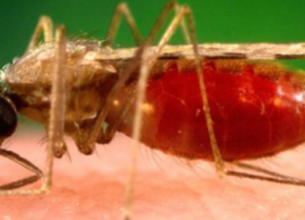Malaria and Notifiable diseases in India
26, Apr 2023

Prelims level : Governance
Mains level : GS-II Governance - Issues Relating to Development & Management of Health
Why in News?
- Malaria is all set to become a notifiable disease across India despite there being a decline in the number of cases.
Highlights:
- At present, malaria is a notifiable disease in 33 States and UTs in India.
- The latest move is in line with India’s vision to be malaria-free by 2027 and to eliminate the disease by 2030.
- India was the only high-burden, high-impact country in the Southeast Asian region to experience a decline in malaria cases in 2020 as compared to 2019.
- India experienced an 85.1% decrease in malaria cases and an 83.36% decrease in deaths during 2015-2022.
Malaria:
- Malaria is a serious mosquito-borne infectious disease caused by various species of parasitic protozoan microorganisms called Plasmodium.
- The malarial parasite was discovered by Dr Alphonse Laveran, a military doctor, in 1880.
- Malaria is transmitted by an infected female Anopheles mosquito.
- The plasmodium parasites multiply and develop inside the liver cells and red blood cells of human beings.
- Symptoms: Fever, chills, and headaches are considered mild symptoms, while fatigue, convulsions, and breathing difficulties are among the severe symptoms.
- Effective Vector Control is a vital component for the elimination of malaria.
- Insecticide-treated nets and indoor residual spraying (IRS) are also effective to reduce the transmission of the disease.
- April 25 of every year has been commemorated as World Malaria Daysince 2007.
Notifiable diseases in India
- Notifiable diseases are those diseases that are required by law to be reported to government authorities.
- This is in line with the World Health Organization’s International Health Regulations, 1969 that mandate disease reporting to the organization to help its global surveillance and advisory role.
- The collation of information helps the government authorities to monitor the disease and provides early warning of possible outbreaks.
- Declaring diseases as legally notifiable by doctors and health professionals facilitates timely interventions to control the spread of highly infectious diseases.
- The responsibility of notifying such diseases and the implementation lies with the State government.
- The government has declared several diseases as notifiable diseases including diseases like cholera, encephalitis, leprosy, meningitis, plague, tuberculosis, AIDS, hepatitis, measles, yellow fever, dengue, etc.








